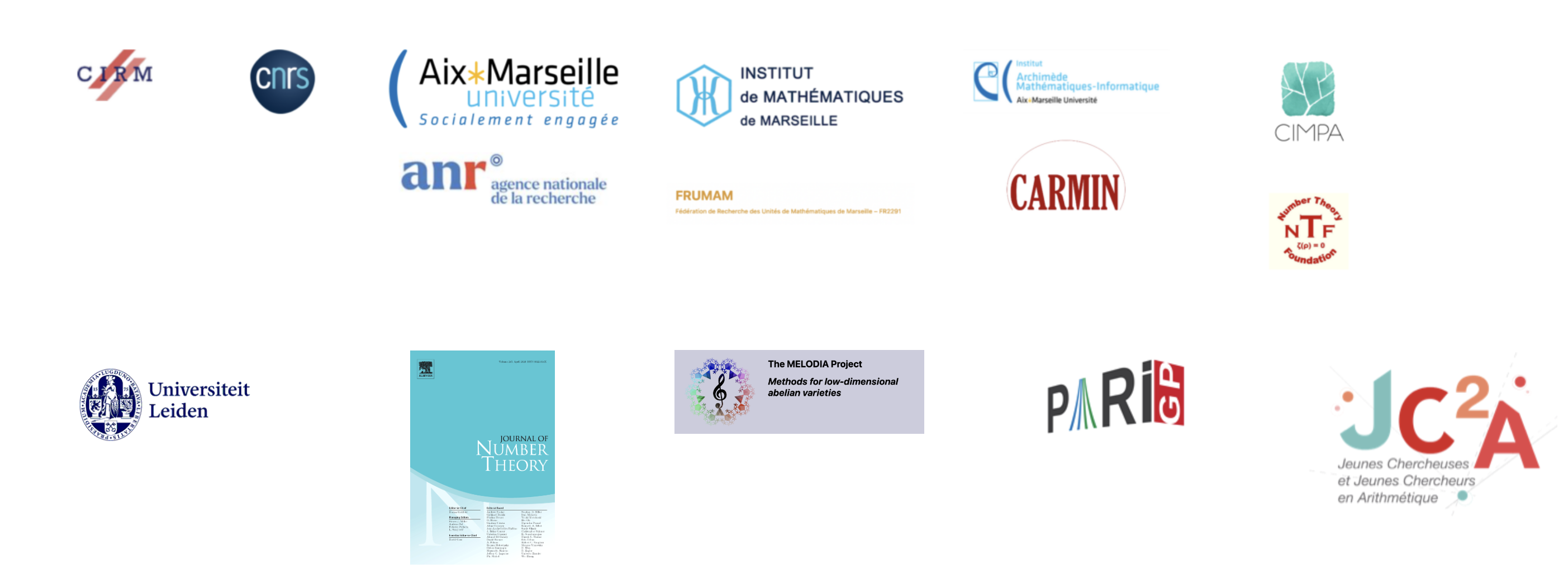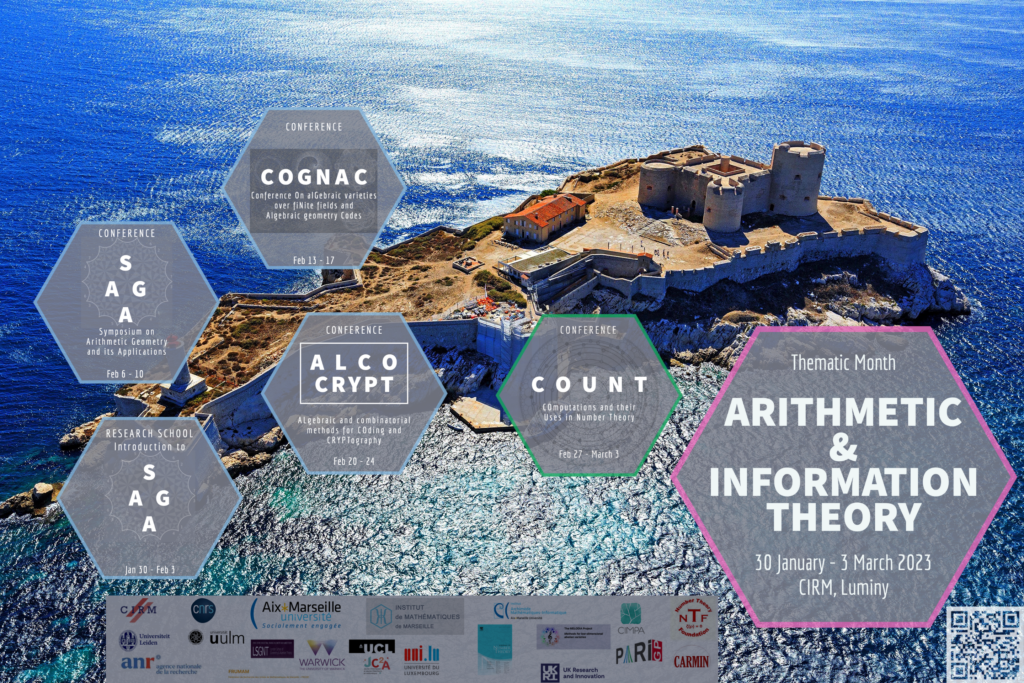THEMATIC MONTH - MOIS THÉMATIQUE
Arithmetic and Information theory
Arithmétique et Théorie de l’Information
30 January – 3 March 2023
Organizing Committee
Comité d’organisation
Samuele Anni (Aix-Marseille Université)
Yves Aubry (Université de Toulon & Aix-Marseille Université)
Stéphane Ballet (Aix-Marseille Université)
Alexis Bonnecaze (Aix-Marseille Université)
David Kohel (Aix–Marseille Université)
The thematic month “Arithmetic and Information Theory” focuses on arithmetic geometry, information theory and their interplay.
Arithmetic geometry is a fundamental and growing area of research in modern mathematics, deeply connected to almost all of its branches. As a measure of its importance, about a quarter of the Fields medalists have worked on problems in arithmetic geometry. There is a vast number of different techniques that have been developed in the field. Algebraic Geometry Codes Theory studies (amongst others) varieties, and in particular curves, with many rational points, having in mind that maximal curves are the aspirational target to obtain codes with the best correction rate. This maximality corresponds to extremal points in the distribution of the Frobenius endomorphism acting on the Tate module of the Jacobian of the curves. For elliptic curves, we are confronted with the Sato-Tate conjecture which is concerned with the statistics to modulo p reductions of families of elliptic curves defined over the field of rational numbers. Galois representations on ´etale cohomology play a central role in this field. The most remarkable aspects of this series of conferences is the omnipresent exchange between applied (codes, cryptography) and pure (arithmetic and geometry) mathematics. The first branch supplies the second with new problems. For example, the impulse of Serre, Manin, and Ihara, motivated by the introduction of Goppa codes, led to hundreds of articles devoted to the study of the number of points on curves over finite fields. A more specialized and recent example concerns quantum codes that lead to the study of couples code/sub-code having special properties. As a counterpart, arithmetic and geometry allow remarkable new results to be obtained in their applications. For example, cryptosystems constructed from elliptic curves over finite fields, or the best asymptotically excellent codes constructed using algebraic varieties.
Le mois thématique “Arithmétique et théorie de l’information” est centré autour de la géométrie arithmétique, de la théorie de l’information et de leur interaction.
La géométrie arithmétique est un domaine de recherche fondamental et en expansion dans les mathématiques modernes, profondément connecté à presque toutes ses branches. Pour mesurer son importance, environ un quart des médaillé.e.s Fields ont travaillé sur des problèmes de géométrie arithmétique. Il existe un grand nombre de techniques différentes qui ont été développées dans ce domaine.
La théorie des codes géométriques algébriques étudie notamment les variétés, et en particulier les courbes, ayant beaucoup de points rationnels, les courbes maximales étant le Graal pour obtenir des codes possédant les meilleurs taux de correction des erreurs. Cette maximalité correspond à des points extrêmaux dans la distribution de l’endomorphisme de Frobenius agissant sur le module de Tate des Jacobiennes des courbes. Lorsque ces courbes sont des courbes elliptiques, nous faisons alors face à la conjecture de Sato-Tate qui s’intéresse à la statistique de familles de réduction modulo p de courbes elliptiques définies sur le corps des rationnels. Les représentations galoisiennes sur la cohomologie étale jouent un rôle central dans ce domaine.
L’aspect le plus remarquable de cette série de conférences est l’échange omniprésent entre les mathématiques appliquées (codes, cryptographie) et pures (arithmétique et géométrie). La première branche fournit à la seconde de nouveaux problèmes. Par exemple, l’impulsion de Serre, Manin et Ihara, motivée par l’introduction des codes Goppa, a conduit à des centaines d’articles consacrés à l’étude du nombre de points sur les courbes sur des corps finis. Un exemple plus sp´ecialisé et récent concerne les codes quantiques qui conduisent à l’étude de couples code/sous-code ayant des propriétés particulières. En contrepartie, l’arithmétique et la géométrie permettent d’obtenir de nouveaux résultats remarquables dans les applications. Par exemple, les cryptosystèmes construits à partir de courbes elliptiques sur des champs finis, ou les meilleurs codes asymptotiquement excellents construits à l’aide de variétés algébriques.
Introduction to SAGA
30 January – 3 February 2023
SAGA, Symposium on Arithmetic Geometry and its Applications
Symposium sur la géométrie arithmétique et ses applications
6 – 10 February 2023
COGNAC, Conference On alGebraic varieties over fiNite fields and Algebraic geometry Codes
Conférence sur les variétés algébriques sur les corps finis et les codes géométriques algébriques
13 – 17 February 2023
ALCOCRYPT, ALgebraic and combinatorial methods for COding and CRYPTography
Méthodes algébriques et combinatoires pour le codage et la cryptographie
20 – 24 February 2023
COUNT, COmputations and their Uses in Number Theory
Les calculs et leurs utilisations en théorie des nombres
27 February – 3 March 2023



